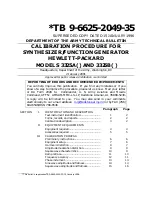
F-em User Guide
6. Modulation Assignment
6.1 About Modulations
F-em features a powerful modulation architecture. Any of the available
modulations sources like LFOs, Envelopes, MIDI Note Numbers,
Velocity, Pitch Bend Wheel and so on can modulate any of the
continuous sound parameters like Operator Frequency Offset, Filter
Cutoff, Equalizer Frequency etc. To make assigning these modulation
sources to destinations as easy as possible, each modulation source
sports a so-called Assign button. The
Assign
buttons for the internal modulation sources
like the LFOs and the Envelopes are located
in the upper left corner of its section (see
picture opposite), while the further available
sources are collected in a dedicated page section at the bottom of the
user interface. For ease of understanding, we call them all just Assign
buttons.
LFO 1 Modulation section at the bottom of the Main Edit Page
You can think of this modulation assignment as connecting a patch
cable from the output of the modulation source to the input of the
destination parameter, with the added functionality of being able to
control its modulation depth. The formula for this is like this:
destination = source x depth
However, just assigning one modulation source to a destination is often
not enough. Imagine controlling a pitch vibrato by the modulation
wheel. For this to work, you need two modulation sources, where one
controls the depth of the other, in this case the LFO controlled in depth
by the Modulation Wheel. F-em certainly offers this as well. Internally,
this results in a multiplication between the two sources, so it doesn‘t
matter which Assign button is pressed first. Mathematically it looks like
this:
destination = source 1 x source 2 x depth
You are not restricted to modulate a parameter by only one modulation
source (or the aforementioned two multiplied sources). You can assign
as many modulation sources as you like to any parameter. A typical
example is modulating Filter Cutoff by an envelope plus letting it follow
the played note, so that higher notes have a brighter sound than lower
notes. Or, modulating the Operator Pitch of a melodic sound by both
the played note (since you want to play a sound melodically) and
adding some vibrato to it. The only limitation is that you cannot assign
49













































